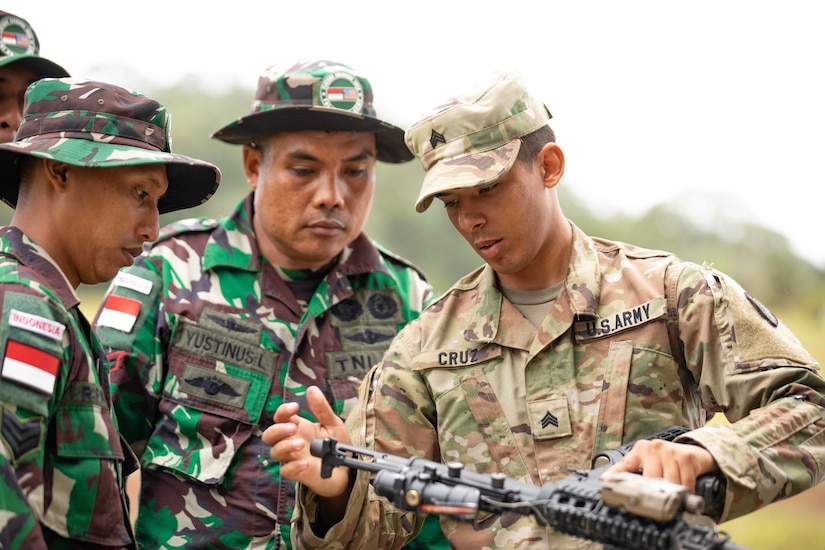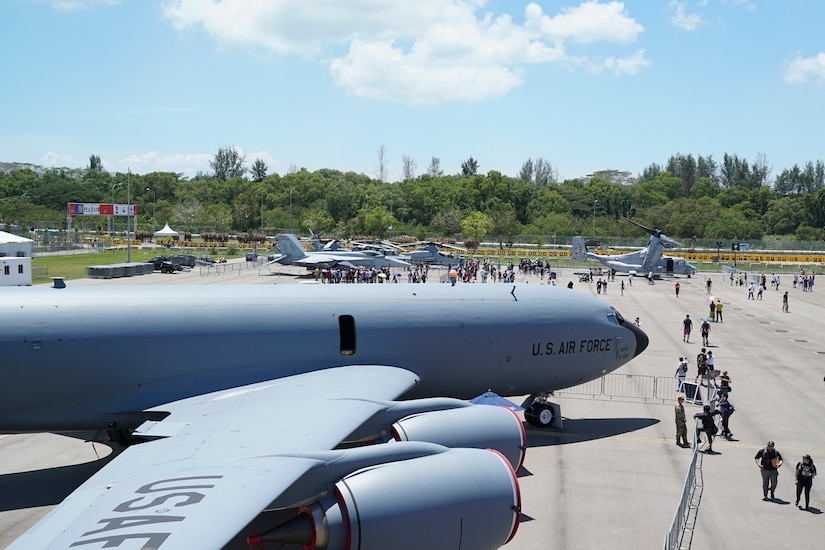The Indo-Pacific has always been a region of superlatives, but the terms have changed over the past decades.
Now people talk about the Indo-Pacific being a "region of consequence," "the priority theater," or the "global economic engine."

For decades, the U.S. military has recognized the importance of the theater. U.S. Indo-Pacific Command covers 51 percent of the globe. The region has 60 percent of the world's population. The United States and China are the world's largest economies. The most soldiers, the biggest navies, the longest distances, most endangered and much, much more. There are hundreds of languages and cultures and environments.
China is the pacing challenge for the United States military, and service members must respond — but it's not the only challenge in the region.
"We've all had these concerns for decades — the rising China, [North Korea], Russia, violent extremist activities — but their scope, volume, scale are much more problematic," said a senior defense official.
Added to all this is the issue of climate change, which touches fundamentally on many of the island nations of Oceania. Also a problem is that this is the Ring of Fire, where tectonic plates collide causing volcanoes, earthquakes and tsunamis. Top it off with COVID-19 and the global pandemic, and there is a complex brew of problems and issues.
China, Russia, North Korea and violent extremism are in the Indo-Pacific and operate there every day. The threats are a direct challenge to the mission of the U.S. Indo-Pacific Command to provide freedom and mobility for commerce in the region, to support good governance, and to deter aggression.
The best weapon in the arsenal is the U.S. network of allies and partners. Unlike Europe where NATO and the European Union have inured the nations to working together multilaterally, the Indo-Pacific doesn't have that architecture, a senior defense official said.
The United States has treaty allies in the region: the Republic of Korea, Japan, the Philippines, Thailand, Australia and New Zealand.

While the United States works bilaterally with many nations in the region, leaders would like to see more multilateral engagement. "The Quad" call that President Joe Biden participated in with the leaders of Australia, India and Japan is promising, officials said. The Quad is not a security pact, but it could grow into an arena that allows the countries to cooperate more.
China's behavior in the region — from fighting with India at the line of control, to increasing efforts and patrols in the Indian Ocean region — is worrisome to India. "They are aware of that and the traditionally non-aligned country is starting to do more with the United States, with Australia and with Japan," the official said. "India is not going to sign a mutual defense treaty with us any time soon, but they are a major defense partner of the United States and they are trying to become more interoperable with the U.S. military in their military capabilities, their command and control, their information sharing."
This is important because the region is so vast and so varied that no one country can do it alone. The United States will need allies and partners to defend the rules-based architecture that has benefited so many — including China.
The U.S. center of gravity is the friends and allies who want a free and open Indo-Pacific. China and Russia really do not have a network even close to this.
U.S. government officials will study the basing of U.S. troops in the region. This doesn't mean bases, but spaces. "We are not looking to reposition large numbers of troops, in large vulnerable concentrations," the official said. "We want to get the virtues of massing without the vulnerabilities of concentration."
This means troops positioning in many different countries in episodic and dynamic ways. The U.S. military doesn't require new and permanent bases in Indonesia and Malaysia, for example. "What we need is episodic places that support operations with our allies and partners," the official said.
Also, officials do not know China's plans, "and anyone who says they do, is probably being a little disingenuous," officials said.

China has built islands in the South and East China Seas and plunked missiles on top. Chinese leaders talk of unifying Taiwan under Chinese rule, but Taiwan was never part of China.
With Taiwan in particular, Defense Department officials look at Chinese capacity. "Do they have sufficient numbers of the right pieces of equipment necessary to execute what … they would believe would be a successful operation?"
China has fielded scores of new and modern systems. "Just in 2020, in the midst of all the COVID related stuff, China still commissioned 25 major new ships," the official said.
A second part of this is that while the U.S. military was fighting in Afghanistan and Iraq, "China went to school on us: We're their pacing threat," the official said.
The Chinese army has training centers similar to those the U.S. has at Fort Irwin, California, and Fort Polk, Louisiana. "They're trying to become joint interoperable," he said.
All this leads to an erosion of U.S. conventional deterrence. Leadership processes are weak. "We believe in decentralized execution," the official said. "The American GI or Marine fights best when there are hand grenades being thrown at them, and nobody's around to tell them what to do."
China has nothing comparable. Chinese leaders can write excellent plans, but once they confront the unexpected, there will be trouble for them.







No comments:
Post a Comment